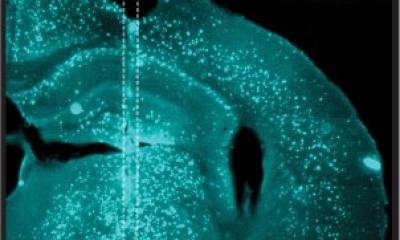Earlier diagnosis for Alzheimer's
Christopher Pryce, PhD, describes a promising test that can predict the onset of Alzheimer's disease some two years earlier than currently available tests can determine. Furthermore, the test can be used in non-human primates in order to research the neurobiology and pharmacology of such neurodegenerative illnesses. Dr. Pryce is conducting preclinical research with this test together with Professor Joram Feldon and Ms. Simona Spinelli, at the Behavioural Neurobiology Laboratory of the Swiss Federal Institute of Technology, Zurich. EUROPEAN HOSPITAL interview: Denise Hennig

Christopher Pryce: We use paired-associates learning tests on primates. A task is presented on a touch-screen computer and the subject has to respond to stimuli - these are symbols that appear on the screen in certain positions. When a symbol appears the monkey touches it to show that it has seen it, and as it touches it, the symbol disappears. Then a second symbol appears which it must touch, and so on. Each of these has been presented in a specific position on the computer screen.
Then comes a memory problem: The same symbols that were presented once in a specific location are presented again on the screen - but each is now placed in different positions. By its behaviour, we can see how the monkey tackles the question: ‘Which position did I see that symbol in before?’ Touching the symbol at the location it was originally presented leads to the monkey receiving a reward (i.e. banana milkshake).
EH: Has this system been tested on humans?
CP: The test is developed deliberately for use on both humans and monkeys. The symbols are made up of abstract shapes and lines and of different colours. Because the test is non-verbal, it can be used in monkeys as well as humans. For humans,the idea is to make it as difficult as possible for the subject to think ‘That’s a square’, or ‘That’s a circle’. What they have to remember is the location, or relationship between a symbol and its position. And because he has to simultaneously remember several such relationships, then his working memory is challenged. This appears to be extremely difficult for patients of Alzheimer’s including those in the very early stages - which standard methods for diagnosing this problem cannot recognise. The aim of our laboratory is to understand, in animals, how the brain controls normal behaviour and when it stops functioning correctly.
EH: How reliable is the test, and what effects does a diagnosis of the disease have on patients?
CP: It has been demonstrated with 90% reliability that someone who scores badly on this test will be diagnosed with Alzheimer’s, within one or two years. The damage that causes this disease has already occurred, but current behavioural tests to definitely diagnose Alzheimer’s are not sensitive enough.
For patients, diagnosis is a dilemma, but I think there is also some good news because the doctor can prescribe the person medication to slow the progress of Alzheimer’s. Such medication is referred to as a cognitive enhancer, and our own research is aimed at contributing to the development of improved cognitive enhancers.
EH: How long has the test been on the market?
CP: We are using an existing test (Cambridge Neuropsychological Automated Test Battery (CANTAB), Cambridge Cognition Limited, Cambridge, UK). In about 1990, psychologists at the University of Cambridge, England, began to develop this set of computer touch screen tests. The same tests can be used in humans and monkeys because they don’t require verbal responses - and these tests include the paired-associates learning test, which is sensitive to an early Alzheimer’s condition. It is used by doctors to screen patients who show psychiatric symptoms. For example, people suffering depression have memory problems, yet they score well on this test. People with Alzheimer’s score poorly on the test, so it allows us to make a specific statement about Alzheimer’s.
EH: What are your plans for the future?
CP: We’re working closely with the pharmaceutical industry on the development of new cognitive enhancers, which improve memory and attention, particularly for those people who have trouble with these, which of course includes those in the early stage of Alzheimer’s. In the development of any new drugs there’s a pre-clinical stage, in which potential new compounds are used in specific behavioural tests to see if they affect the performance of animals. We use primates because, in evolutionary terms, they are a step closer to humans. The pharmaceutical industry recognises the importance of primate work in this area; in fact, Simona Spinelli who is conducting some of this research for her PhD degree, is funded by a studentship from Hoffmann-La Roche.
30.04.2003











